To Clip-in or not to Clip-in, that is the question!
How to decide whether to use clip-in shoes or not
Upon returning to serious cycling, my friend and mentor, Marc, suggested putting some thought into clip-in pedals and shoes. Previously, I was using a plastic cage on my existing pedals, rarely putting my toes in the cage. It felt unsafe from my perspective. It's crucial to understand the safety concerns related to not using clip-in pedals.
The reason people suggest clip-ins is because you get extra power from every turn of the pedal crank. Instead of only laying down power when pushing on the downstroke, you also get to pull up on the upstroke. I also think keeping your feet in the same place adds to the efficiency of the all-round pedal stroke.
Let me assure you, the transition to clip-in shoes is smoother than you might expect. Remember the first time you clipped into skis? Similar experience! It's just about practicing and getting used to during the initial period.
Feeling up to trying it? Having a brief overview of how to start with different pedal systems can make your transition clearer and simpler. So, let's dive in.
But which ones should I use? – there’s such a choice out there….
Choosing a pedal system doesn't have to be a tough task. Consider your style of riding. Perhaps, you're into road cycling, mountain biking, or commuting. Each form of cycling has suitable pedals. Let's explore further.
- Easy riding, commuting short distances – no clips needed
- Mountain biking – where you frequently need to put your foot down on the ground, rock, tree stump etc. – flat pedals – no clips needed
- For longer, less interrupted trail rides or gravel biking, consider the Shimano Speed MTB (SPD) double-sided. They're a splendid choice due to their durability and efficiency during such type of rides.
- Longer commutes – where you will need to stop for traffic lights etc. Choose SPDs paired with single or double-sided SPDs (I recommend Shimano M324 Combination pedals)
- Road riding/Racing – SPD-SL/Look/Xpresso paired with stiff-soled road shoes.
How can I recognize the different systems?
Ok, tough question, but the anwer is really quite simple, and you don’t need to know too much. For simplicity’s sake I am going to concentrate on Shimano systems but I will show some images of Look and Time Xpresso at the end.
SPD – Shimano Pedaling Dynamics
These are cleats that fix to the sole of the shoe with just 2 bolts. The are adjustable fore and aft, and side to side for individual fit and comfort. What I like about this system is the cleat (which is the bit that you bolt to the shoe and attaches to the pedal) sits in a recessed cavity in the bottom of the shoe so when you get off the bike you can walk about comfortably, rather than teetering around tentatively! Also, the grip on the bottom is just like a normal trainer, or leisure shoe, so you won’t slip over wet tiles/lino on those essential cafe/pub breaks!
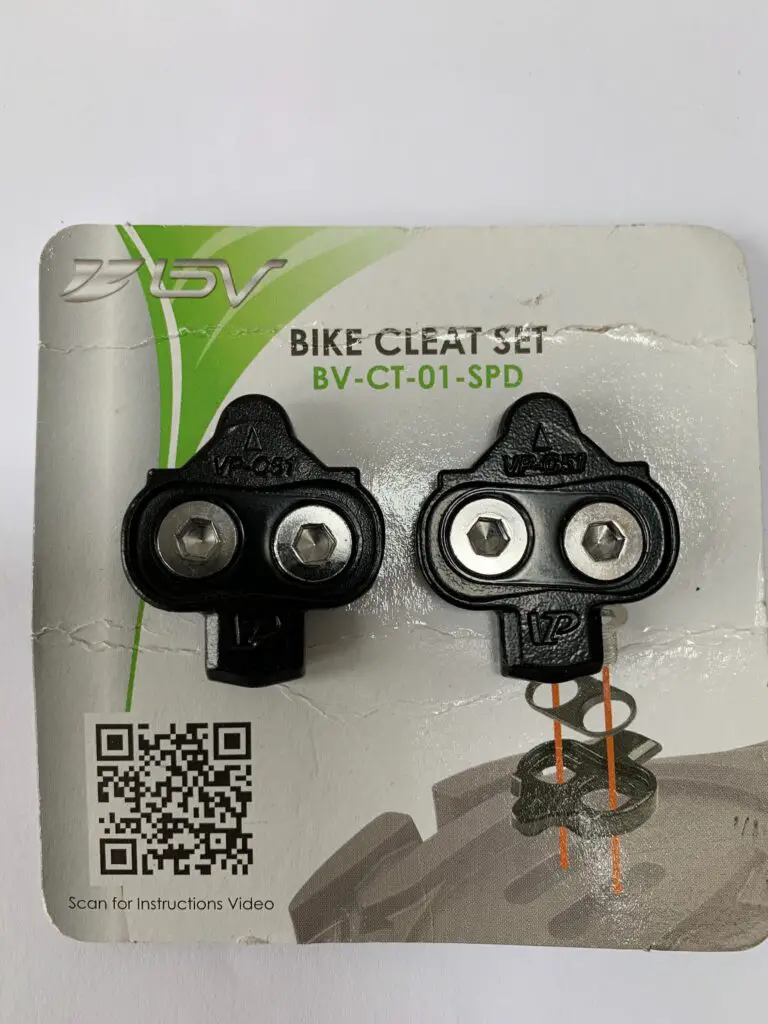
SPD Cleats - Notice the unique design and make, chosen for a specific scenario. 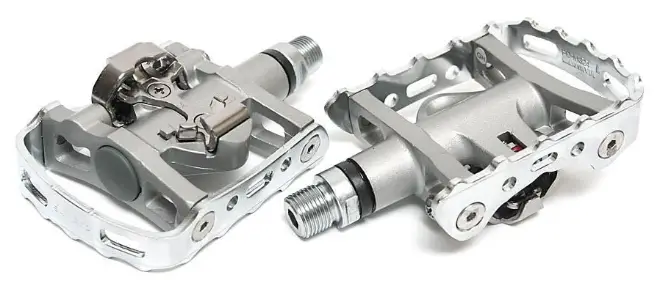
2-sided pedals – clip in one side, flat pedal the other 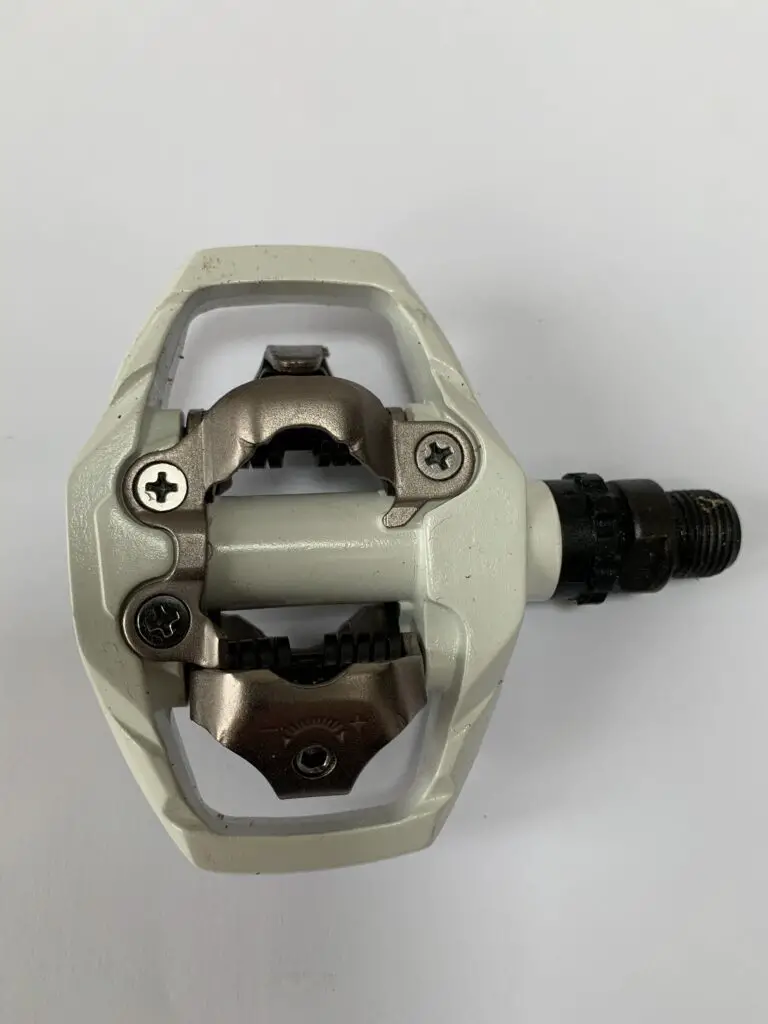
SPD double-sided pedal. Clip in on both sides
Why choose this SPD system?
For me, this is the ideal system if you’re not a really competitive cyclist. It’s easy to live with, a breeze to clip in and out of, and certainly an easy entry into the world of clipped-in cycling. Of course, it’s not as efficient in transferring power as SPD-SL, Look or Xpresso but it’s way better than not being clipped in, or using cages. I’ve cycled upwards of 80 miles in a day using this system and I think it’s an ideal compromise for most people. It’s also way more comfortable than road racing shoes with the SL versions – the shoes I use (Giro VR Rumbles) are all-day-long wearable and look kind of cool too! They are definitely cafe, pub, public toilet and sightseeing bimbling compatible, certainly more so that tottering along tiled and possibly slippy/wet floors in SPD-SL cleats that’s for sure!
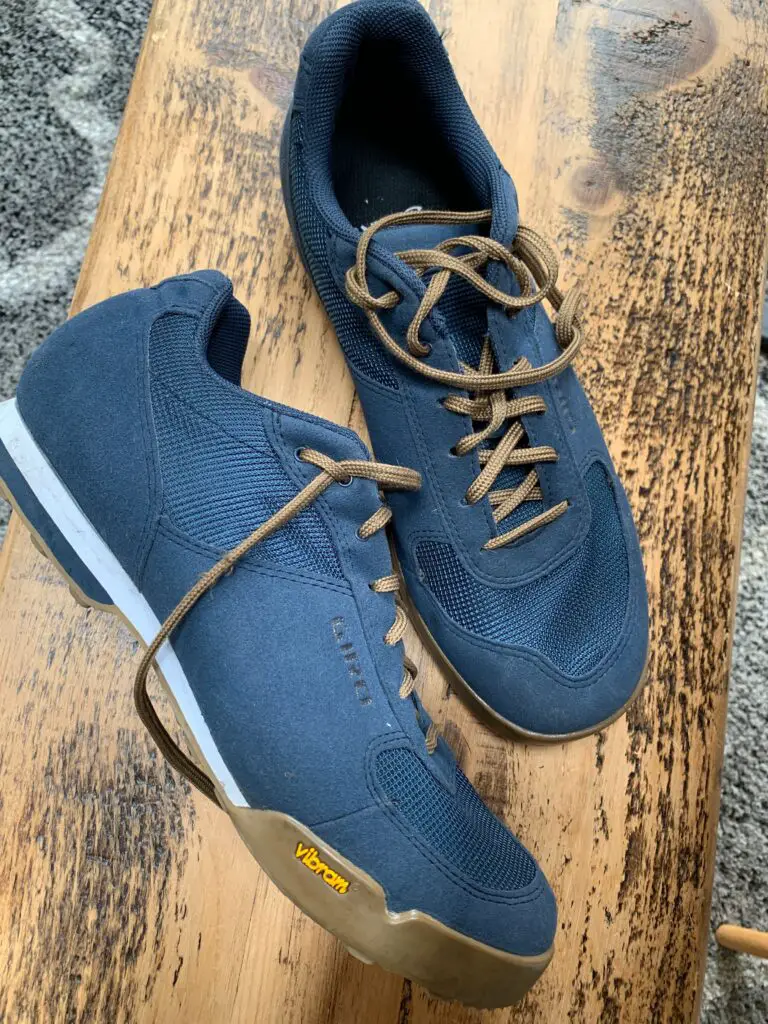
Presenting the comfortable SPD clip-in shoe - perfect for all-day cycling. The thoughtful design prioritises comfort, essential for prolonged usage. 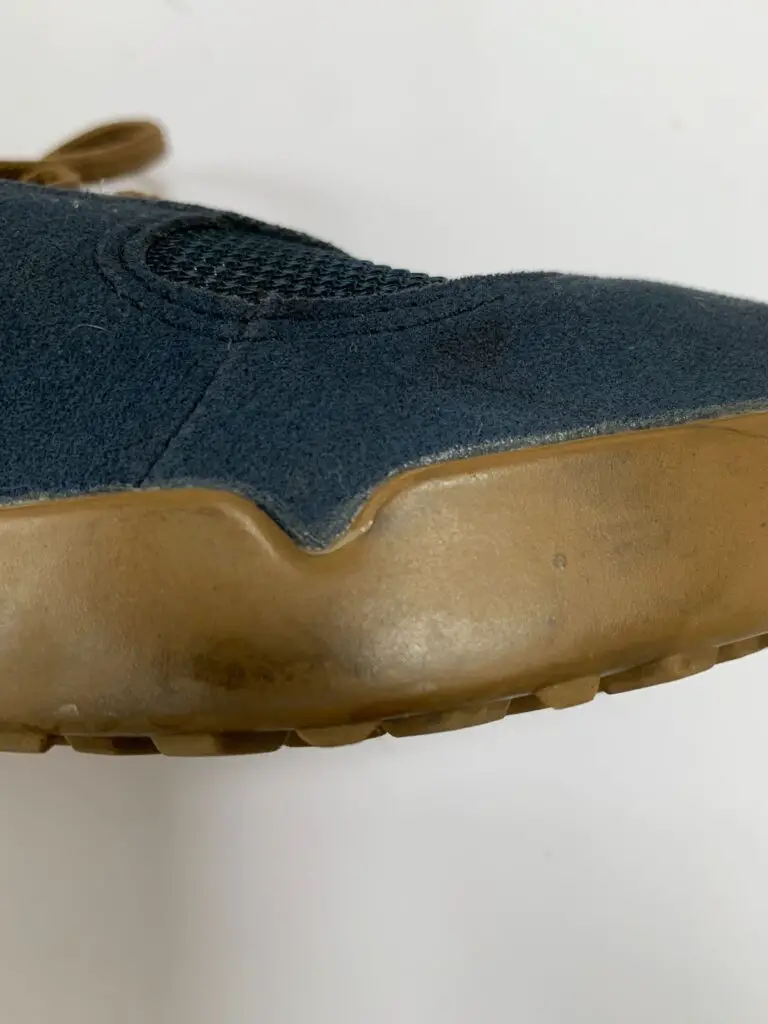
no cleat protrusion under the shoe – it’s like a normal shoe, only better! 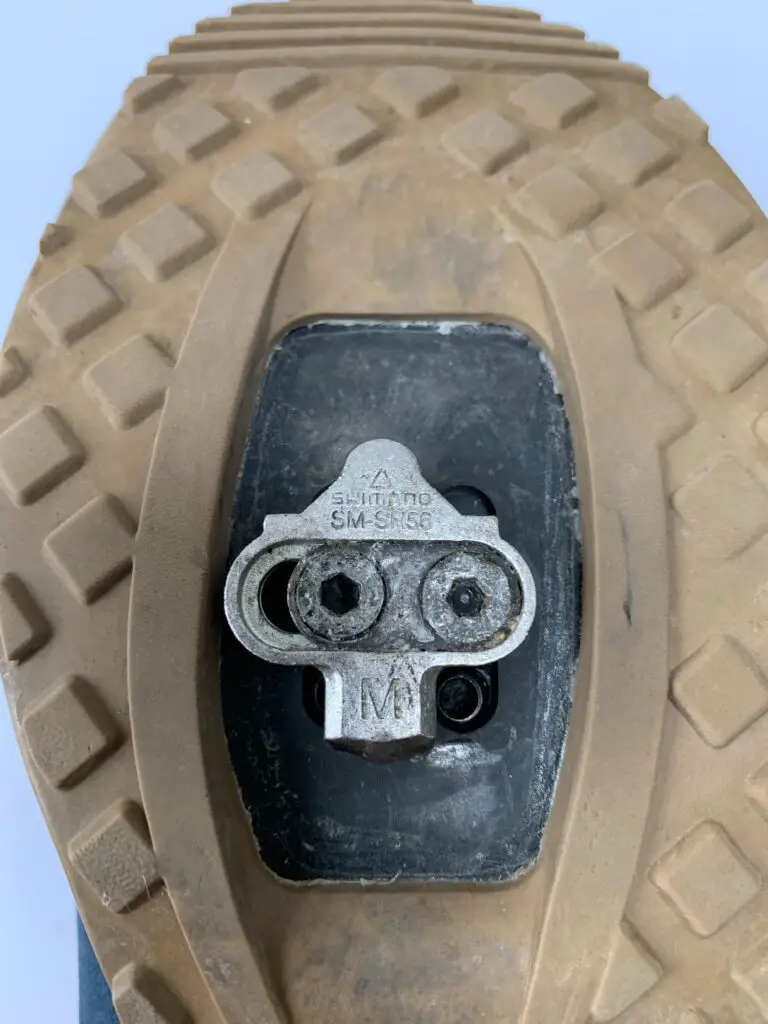
SPD cleat seen in the shoe recess
What are the potential drawbacks of SPD-SLs?
Oh, no, not at all. For competitive cycling, the gains brought about by the more efficient transfer of power are definitely noteworthy. I train on my Peloton static bike using SPD-SL and it really helps me reach my highest possible outputs. The shoes available with SPD-SL are light, comfortable and aerodynamic, so for triathlons, long rides and sportives where performance is important to you, definitely consider the SPD-SL system.
Over long road rides, or for time-trials, sportives, high-mileage days in the saddle, this system can be a great choice!
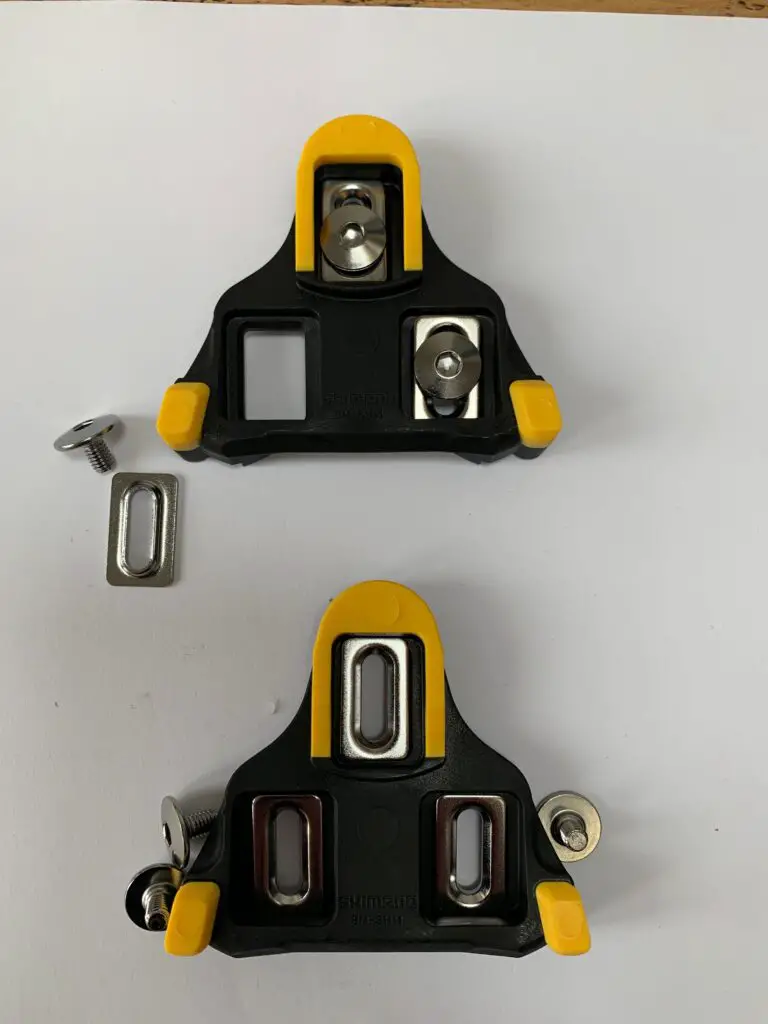
SPD-SL cleats and fixings 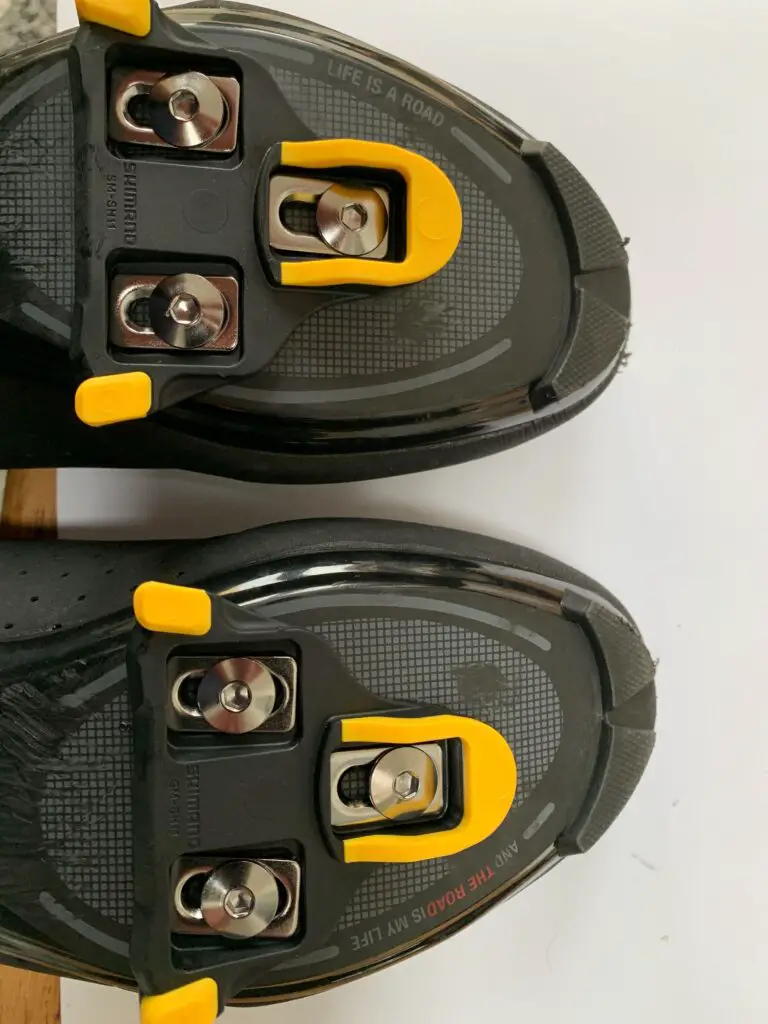
SPD-CL cleats fixed to a road shoe 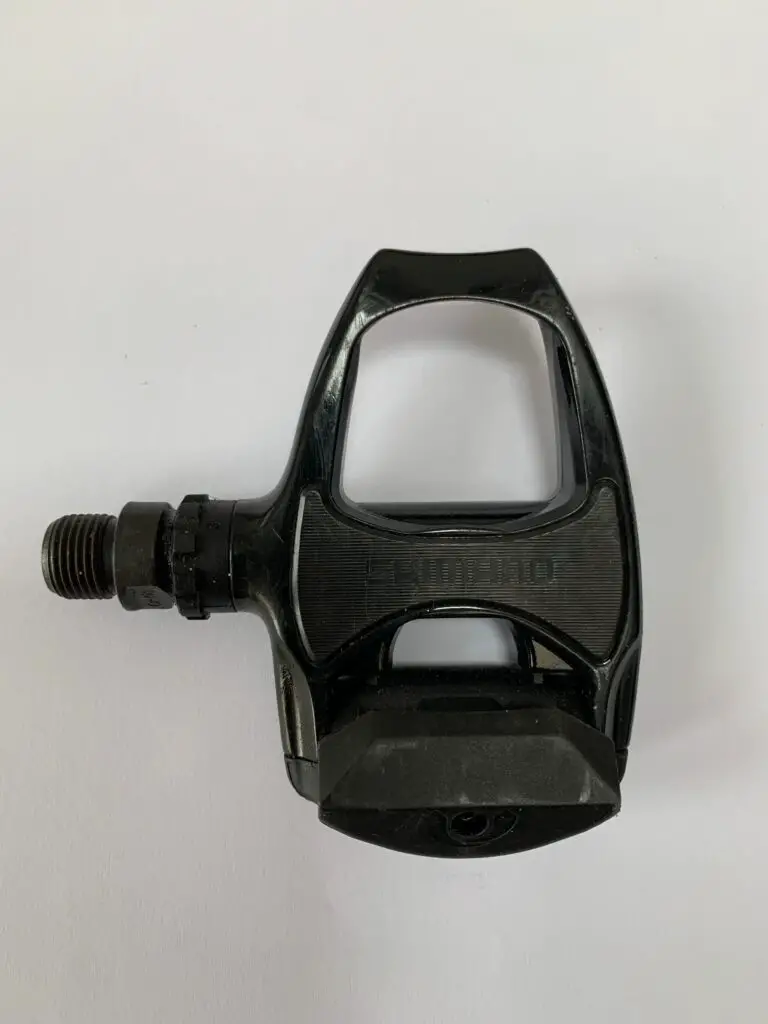
This is an SPD-SL pedal - Observe the design on the right-hand side, a feature providing specific advantages during your ride.
What are the disadvantages of SPD-SL?
I find them a tad harder to clip in and out of, occasionally causing some strain on my knees. While the power benefits are clear, the risk of potential strain and injury outweighs the performance gains, from my viewpoint. Of course, this is not a universal sentiment and having credible sources about the risk for strains and injuries would help present a balanced view.
